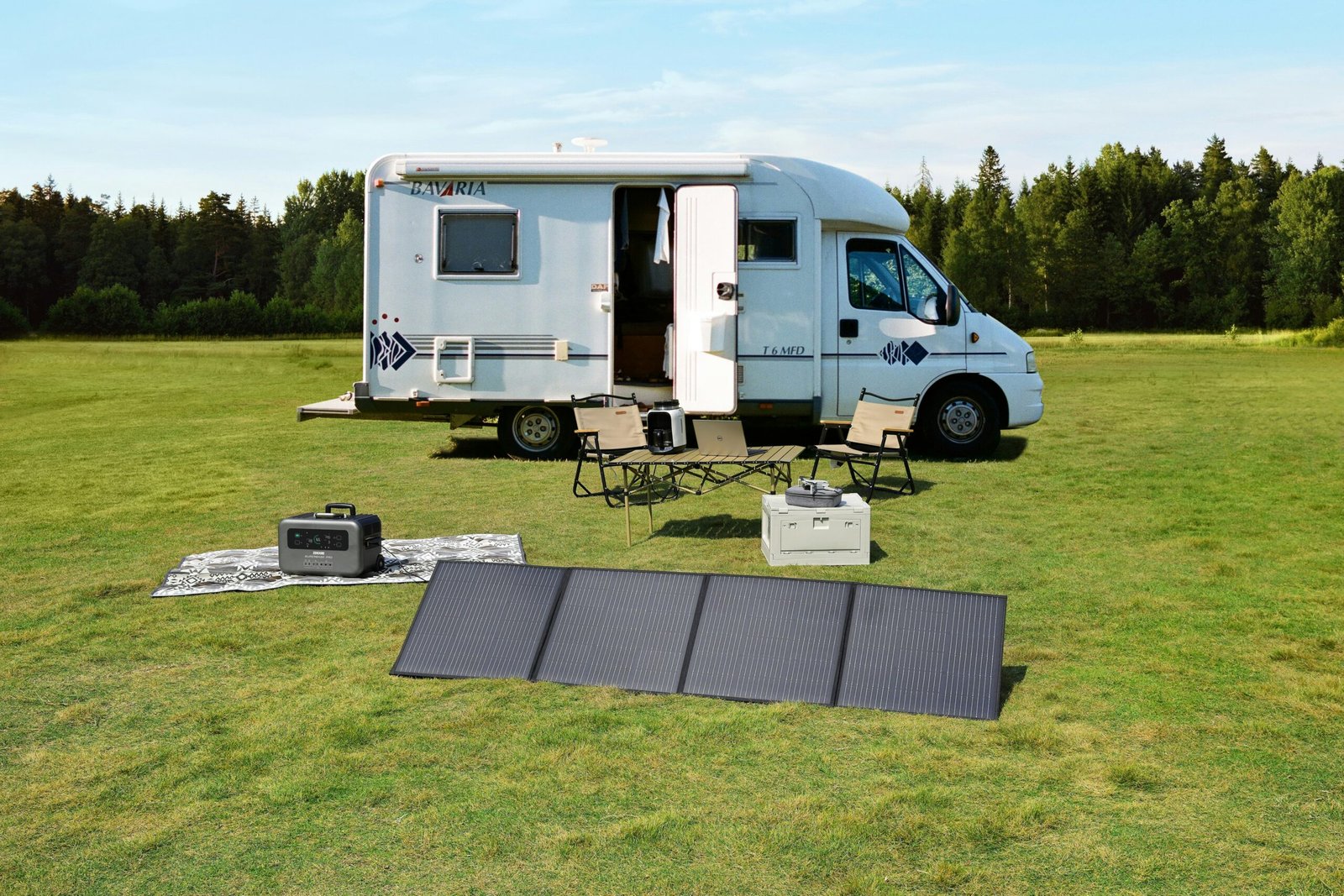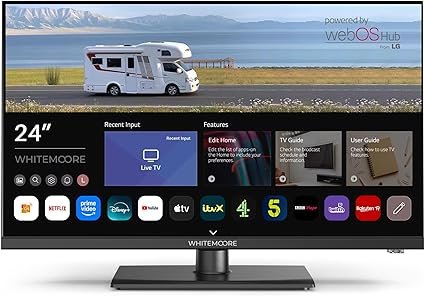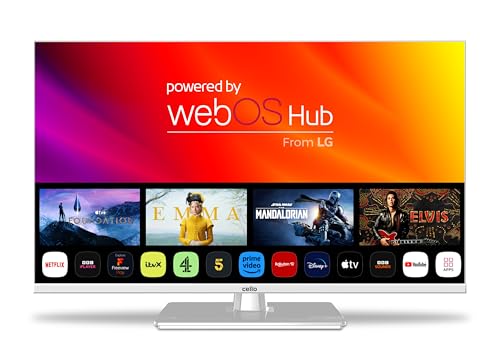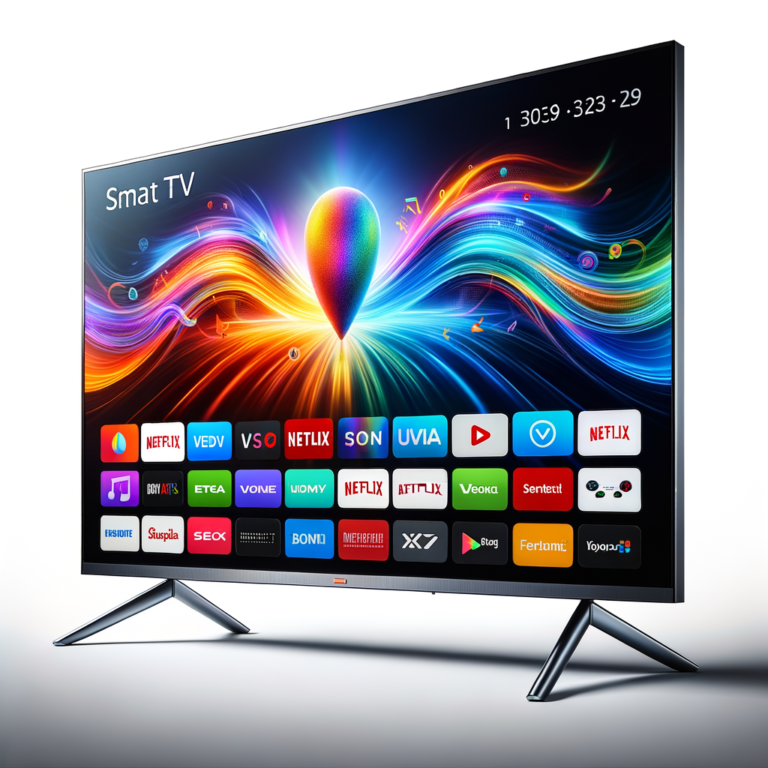The Best Motorhome TV Options: A Complete Guide
As the popularity of motorhome travel continues to rise, the demand for reliable and enjoyable entertainment options is becoming increasingly important. A well-equipped motorhome enhances the overall travel experience, allowing travelers to unwind and relax in a familiar environment after an adventurous day. Among the various entertainment options available, having a television is a key consideration for many motorhome owners. An engaging TV setup can provide a sense of comfort and normality while on the road, especially for traveling families or those on extended trips.
Mobile entertainment, particularly in the form of televisions, has evolved significantly over recent years. Many RV enthusiasts now prioritize having high-quality audio-visual equipment that meets their entertainment needs. This growing trend highlights the necessity for motorhome owners to evaluate their TV options carefully to ensure they select a system that fits their lifestyle and travel preferences.
Introduction to TV Options for Motorhomes
When considering TV solutions for a motorhome, there are several factors to keep in mind. First, the size and type of the television should align with the available space and layout of the RV. Flat-screen models, particularly LED and LCD options, have gained favor due to their slim profiles and vibrant displays, making them ideal for compact living spaces. Additionally, it is crucial to factor in the ability to receive signals for over-the-air channels or satellite services, as this directly affects viewing options while traveling.
Another important consideration is connectivity. Ensuring access to streaming services and the internet can greatly enhance the entertainment experience, allowing travelers to enjoy their favorite shows and movies regardless of location. Ultimately, understanding the various choices available, along with personal preferences, will lead to informed decisions when it comes to selecting the best TV options for a motorhome. A well-thought-out television setup can greatly extend the enjoyment of the traveling experience while fulfilling the need for leisure and relaxation on the open road.
Portability: The Key Factor for Motorhome TVs
When selecting a television for your motorhome, portability stands out as a crucial factor. The concept of portability in the context of motorhome TVs encompasses several essential elements, including size, weight, and power requirements. A portable TV should be compact enough to fit comfortably within the limited space of your motorhome, allowing for convenient installation and storage.
In terms of size, it is advisable to choose a screen that balances visibility and space efficiency. Options ranging from 19 to 32 inches are common, as these sizes provide a satisfying viewing experience without overwhelming your limited living area. Additionally, the weight of the television plays a significant role; a lightweight model can be moved and repositioned effortlessly, which is particularly beneficial for travelers who frequently change locations.
Another critical consideration is the power requirements of the TV. A portable motorhome TV should ideally have low power consumption, allowing it to run efficiently on your motorhome’s battery system or limited power sources. Many modern models come with energy-efficient LED displays, making them suitable choices for mobile living. In addition, some televisions have dual-voltage capabilities, enabling them to operate on both 12V and 220V power systems. This flexibility ensures that whether you are at a campsite with electric hookups or boondocking in the wilderness, your TV will remain a dependable source of entertainment.
The benefits of having a lightweight and easy-to-install option cannot be overstated. A portable TV enhances the overall travel experience, providing entertainment options during downtime while maintaining the ease of use that motorhome living demands. With the right portable television, you can enjoy the comforts of home while exploring the great outdoors.
- 22inch TV supports digital T2 tuner H.256 Freeview(NO CI/CI +)
- HDMI & USB ports. Support DVD player,&media player: you can watch movies in various video formats (AVI, MKV, VOB), view …
- Interfaces:The TV has 1 HDMI port, 1 VGA port, 1 AV input port, 1 USB input port, 1 headphone port, and a variety of por…
- 19 Inch Screen and HD Resolution: Desobry portable TV with 19 inch large screen, offers you 1080P resolution for clear a…
- Stand and Dual Speakers: This TV features a built-in 180° adjustable stand for easy setup on any flat surface, making it…
- Built-in Digital Tuner: Includes built-in digital tuner and come with antenna for receiving over-the-air broadcasts, thi…
- ⚡ Lightning-Fast Performance with WebOS by LG: Experience up to 100% faster streaming app performance with our powerful …
- 🛡️ 3-Year Extended Warranty for Peace of Mind: Enjoy long-lasting performance backed by an extended 3-year warranty, ens…
- 🌟 Sleek and Slim Design: Measuring 32 inches diagonally, with outer dimensions of 29 inches in length and 18.7 inches in…
Top Portable TV Options for Motorhomes
Selecting the ideal portable television for your motorhome can significantly enhance your travel experience, providing entertainment during downtime. Several models cater to the unique requirements of motorhome users, balancing portability, battery life, and features. Below is a review of some of the best options currently available.
The Cello 14 Inch Rechargeable TV 12 Volt is a popular choice among motorhome enthusiasts due to its compact size and smart features. With a resolution of 720p, it offers clear picture quality, and its integrated Fire OS allows access to a variety of streaming services. Although it typically requires a constant power source, pairing it with a portable power station can extend usability. Additionally, customer feedback highlights its compatibility with streaming apps, making it a versatile option for lengthy trips.
Another excellent choice is the SuperSonic SC-1611 16-Inch Portable TV. This model is especially favored for its lightweight design and built-in rechargeable battery, allowing for up to 3-4 hours of viewing without external power. The SC-1611 features multiple connectivity options, including HDMI and USB ports, enabling easy access to various media players. User reviews frequently commend its affordability and performance, making it a practical option for those seeking a balance between functionality and price.
The Sharp 24 Inch Smart LED 12v 24v TV with Freeview Prime Netflix Satellite also deserves mention. It offers a built-in DVD player, which many campers find essential for entertainment while on the road. The screen size is conducive to smaller living spaces, and it can be powered using a standard AC outlet or car charger. Customer ratings often emphasize its ease of use and reliability, making it a noteworthy option for motorhome users.
In conclusion, these portable TV options stand out in the market for motorhome users. By considering size, battery life, and additional features, one can make an informed choice that enhances their mobility experience.
Digital TV Solutions for Motorhome Users
For motorhome enthusiasts seeking reliable digital television solutions, several options cater to the unique challenges of mobile living. Understanding the various digital TV methods is essential to ensuring quality entertainment during your journeys.
One popular choice is the use of digital antennas. These antennas are designed to receive over-the-air signals, making them an affordable and straightforward option for many motorhome users. They require minimal installation and are often portable, allowing for flexibility when parking in various locations. However, the reception quality can vary significantly depending on the geographical area and the proximity to broadcast towers. Users often recommend investing in a high-gain antenna to improve the chances of receiving a clearer signal.
Another solution is satellite dishes that offer a broader range of programming options. Motorhome users can opt for portable satellite systems or permanently mounted dishes. Portable systems tend to be easier to set up but may involve a more complex installation if you choose a permanently fixed dish. One significant advantage of satellite television is the ability to access channels regardless of location, providing entertainment even in remote areas. However, it is worth noting that satellite reception can be obstructed by trees or mountains, potentially affecting performance.
Streaming services have gained popularity among motorhome users as well. Platforms like Netflix, Hulu, and Amazon Prime Video offer a vast array of content at your fingertips. To utilize these services, a reliable internet connection is essential. This can be achieved through mobile hotspots or Wi-Fi boosters. While streaming services provide flexibility and a wide selection of shows and movies, they rely on consistent internet connectivity, which may not always be available on the road.
Ultimately, choosing the best digital TV solution for your motorhome will depend on your specific needs, locations, and budget considerations. Each option offers distinct advantages and challenges, making informed decision-making crucial for a satisfactory viewing experience while traveling.
Smart TV Solutions for Motorhomes
In recent years, smart TVs have become increasingly popular among motorhome owners looking to enhance their entertainment experience while traveling. One of the most notable advantages of using a smart TV in a motorhome is the built-in Wi-Fi capabilities. This feature allows users to connect to available networks, enabling seamless streaming of their favorite shows and movies. By simply connecting to a Wi-Fi source, whether it be a campsite’s public network or a mobile hotspot, travelers can access a plethora of apps, including popular services such as Netflix, Hulu, and Amazon Prime Video.
The extensive app availability on smart TVs significantly contributes to the versatility of entertainment options available in a motorhome. With various streaming platforms, users can select content that caters to their preferences, making long journeys more enjoyable. Some smart TVs even support screen mirroring, enabling travelers to project content from their mobile devices onto the larger screen. This feature can be particularly handy for sharing vacation memories or selecting entertainment as a group.
Despite the many advantages, there are important considerations regarding subscription requirements and data usage for motorhome owners. Most streaming services necessitate an active subscription, which may add to overall travel costs. Additionally, data consumption can fluctuate significantly depending on the resolution of the content being streamed. It’s essential for travelers to monitor their data usage, particularly when relying on mobile data plans with limited capacity. By being aware of these factors, motorhome owners can ensure they enjoy an uninterrupted, enjoyable viewing experience without incurring unexpected charges.
Installing and Setting Up Your Motorhome TV
Installing a television in your motorhome can elevate your travel experience, allowing you to enjoy your favorite shows and movies while on the road. To ensure a successful installation and set up, follow these step-by-step guidelines.
First, assess the available space in your motorhome for the TV. Choosing the right size is essential; it should fit comfortably without overwhelming the interior. Consider wall-mounted options that maximize floor space. Be sure to select a mount specifically designed for use in vehicles, as these are typically sturdier and can better withstand the vibrations and movements experienced during travel.
Once you have selected the optimal location and type of mount, secure the TV properly. Start by using a stud finder to ensure that you attach the mount to a solid surface, preferably a wooden stud in the wall. Use the appropriate screws and tools, ensuring that all connections are tight and secure. It is crucial to use a safety strap or bracket designed for travel to prevent any movement or damage to the TV while on the road.
The next step is connecting your TV to a power source as well as antenna or satellite for signal reception. Check the motorhome’s electrical system; you may need a power inverter if you wish to use a 120-volt TV. For signal, consider using either a roof-mounted antenna or a portable satellite dish depending on your travel preferences.
Lastly, ensure that all cables are properly organized and secured. This not only improves the aesthetic of your motorhome but also reduces the risk of entanglement during travels. Keeping cords managed and hidden is essential for both safety and appearance. Taking the time to properly install and set up your motorhome TV will enhance your overall travel experience, providing comfort and entertainment while exploring the open road.
Power Solutions for Your TV in a Motorhome
When it comes to powering a television in your motorhome, several viable options are available, each boasting distinct advantages and limitations. Understanding these solutions can help you choose the best configuration for your travel needs.
One common method is using a generator. Generators provide a reliable source of electricity and can power various appliances, including a TV. They come in different sizes and power outputs, allowing users to select one that matches their energy requirements. However, while generators enable off-grid livability, they can be noisy and may require maintenance. Additionally, fuel availability should be considered, especially during extended travels in remote areas.
Battery power is another popular choice for running a TV in a motorhome. Most recreational vehicles come equipped with 12-volt batteries that can support a range of electronics, including TVs. The main advantage of using batteries is their silence and lack of emissions, making them perfect for quiet campgrounds. However, battery capacity is limited; consequently, users need to monitor their energy consumption closely to avoid draining the battery before it can be recharged. Opting for energy-efficient TVs can mitigate this issue while maximizing viewing time.
Solar power has gained traction as a sustainable way to operate a television in a motorhome. Solar panels, when installed on the roof, harness sunlight to generate electricity, converting it to power for various devices. This option is eco-friendly and can provide a nearly endless supply of energy, depending on sunlight exposure. However, the initial setup cost can be high, and solar power generation is seasonally dependent, requiring users to assess their travel patterns and average weather conditions.
To optimize energy management in a motorhome, it is advisable to combine these options. For instance, using solar panels to charge batteries while having a generator as a backup creates a balanced and resilient power solution for enjoying television entertainment on the go.
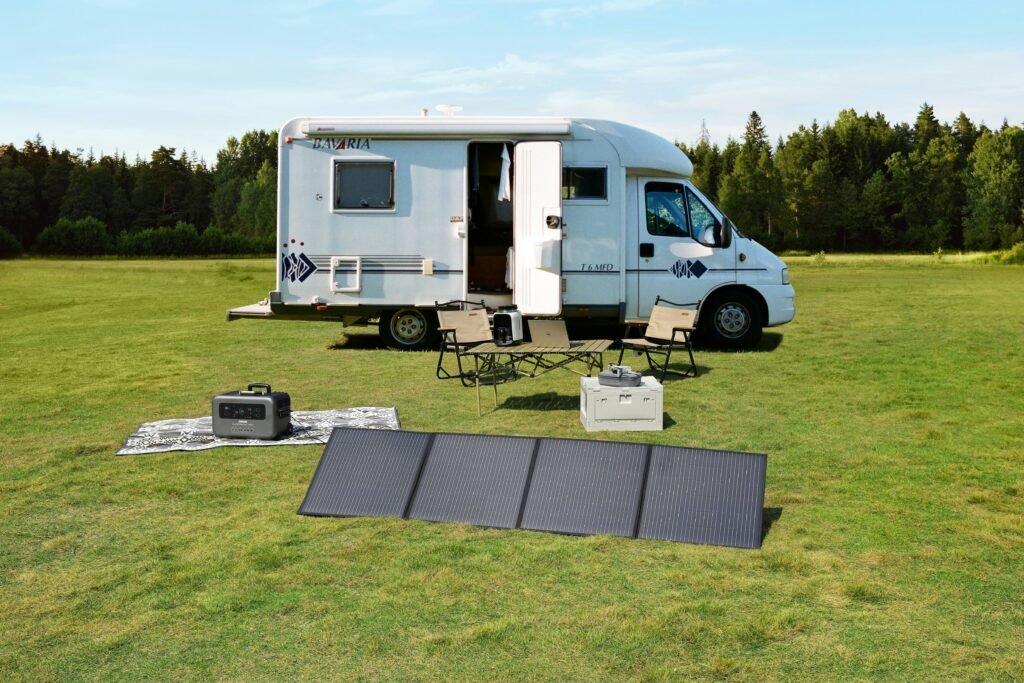
Enhancing Your Motorhome TV Experience
With the increasing popularity of motorhome travel, ensuring an enjoyable TV viewing experience can significantly enhance your journey. To optimize your motorhome TV experience, consider the sound system options you choose. While factory-installed TVs often come with basic built-in speakers, upgrading to a high-quality sound system can make a substantial difference. Look into soundbars or portable Bluetooth speakers that can be easily set up and removed. These options deliver superior audio quality and can create a more immersive viewing environment, whether you are watching a movie or enjoying a game day.
Comfort should also be a top priority when it comes to seating arrangements for TV watching in your motorhome. Traditional RV seating can be less than ideal for long viewing sessions. Consider investing in recliners or comfortable portable chairs that can be adjusted for the best viewing angle. Swiveling chairs can provide flexibility and help optimize space. Additionally, arranging furniture to face the TV directly, rather than at an awkward angle, will enhance comfort and enjoyment.
For those who love to watch TV outside while soaking in the natural surroundings, setting up an outdoor TV configuration can be a delightful addition to your motorhome experience. Portable televisions, designed for outdoor use, can withstand varying weather conditions and offer easy setup options. To enhance your outdoor viewing experience, consider installing a pull-out shelf or mounting system that allows for quick adjustments. Don’t forget to create a cozy atmosphere by arranging seating in a way that provides comfort and optimal viewing. String lights or a portable fire pit can add to the ambiance, further enhancing your enjoyment under the stars.
Conclusion: Choosing the Right TV for Your Motorhome
When it comes to selecting the ideal television for your motorhome, several key factors must be carefully considered. The diverse range of options available, including LED, OLED, and smart TVs, offers something for every traveler’s preferences and budget. Understanding the differences between these technologies can greatly influence your overall viewing experience while traveling.
Additionally, screen size and portability are crucial components of your decision-making process. For motorhome users, a balance must be struck between size and weight to ensure that the model chosen fits comfortably within the living space while being easy to set up and transport. Many users find that televisions ranging from 24 to 32 inches provide an optimal viewing experience without overwhelming the limited space available in motorhomes.
Compatibility with your existing devices and antenna systems should not be overlooked. A television that integrates well with signal boosters and satellite systems can enhance your ability to watch your favorite shows, regardless of your location. Furthermore, selecting a model that is energy-efficient can help conserve your motorhome’s power use, keeping your trips enjoyable and sustainable.
Finally, it’s essential to remain mindful of your personal viewing habits when choosing TV for motorhomes. For those who enjoy streaming content, a smart TV with robust connectivity options may be advantageous. In contrast, individuals who prefer traditional broadcasting may prioritize models featuring integrated tuners and compatibility with digital antennas.
Ultimately, the right television should encompass not only your entertainment preferences but also your motorhome’s specifications and your travel lifestyle. By taking the time to carefully assess your choices and weigh the various options discussed, you can find a TV that enriches your adventures on the road, providing entertainment and comfort wherever you are.
